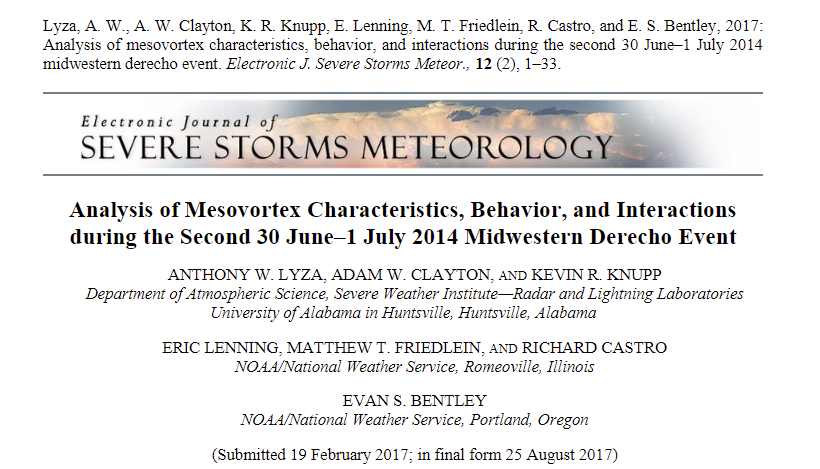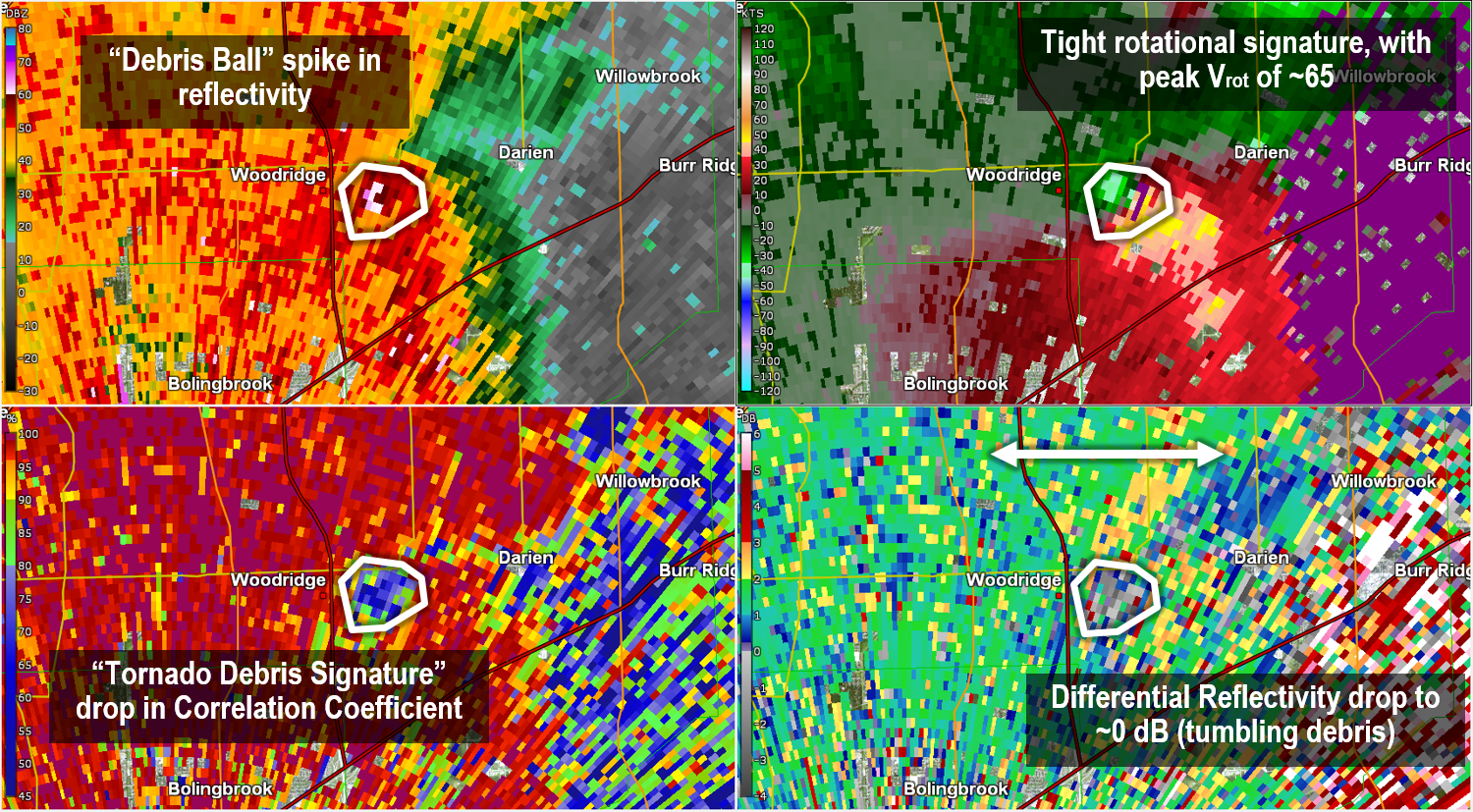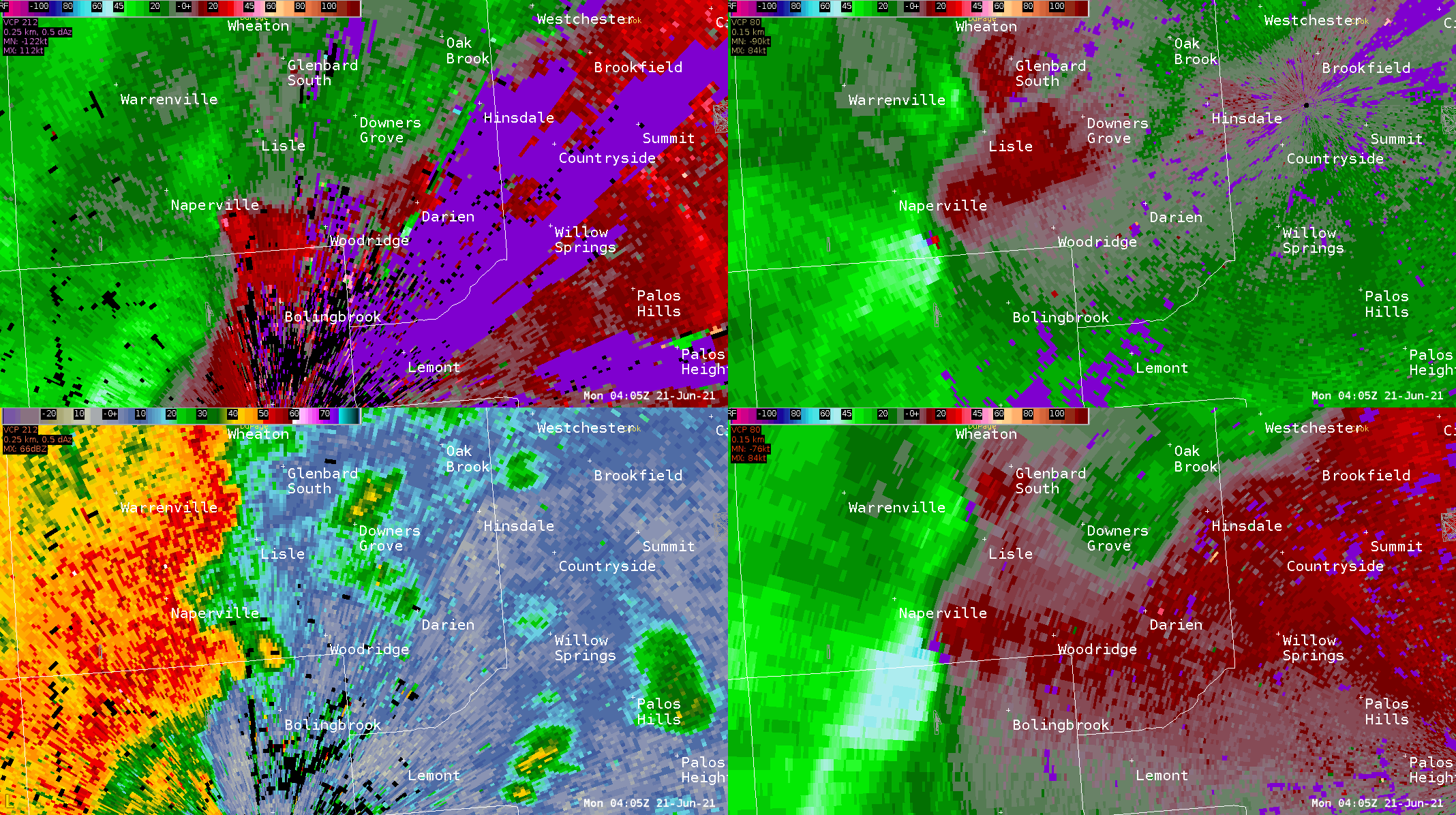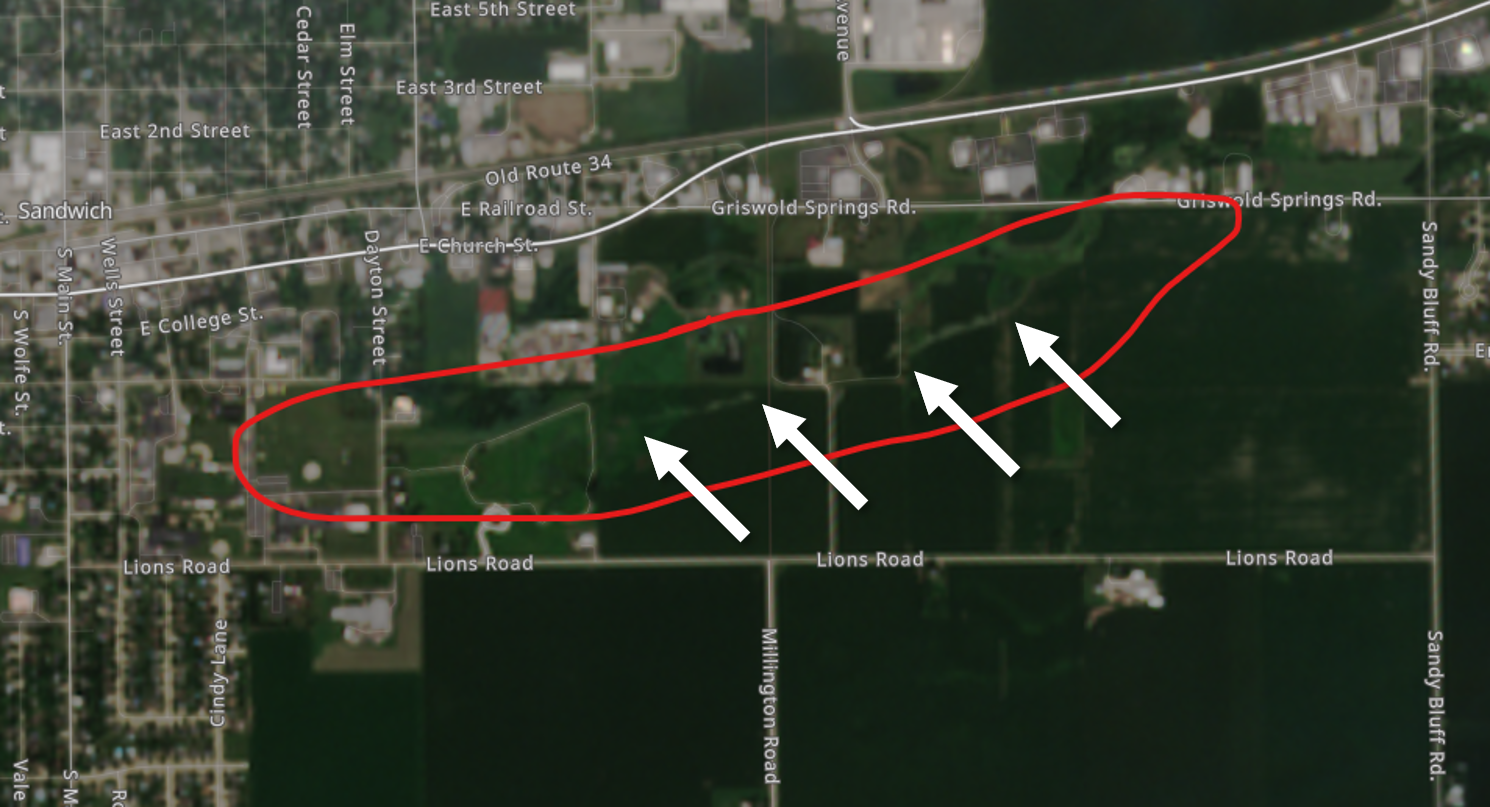Note: This web page was constructed at the end of 2023 to look back at a remarkably active tornado year in northern Illinois and northwest Indiana. While several new tornado records were set in the local area in 2023, many of these records were broken the following year in 2024, which also managed to be an exceptionally active year for tornadoes. Thus, many of the records and rankings listed on this web page (including the record number of tornadoes for a calendar year in the NWS Chicago forecast area) are no longer valid and only apply when using 1950 through 2023 as a period of record.
|
|
Overview and Statistics
In 2023, there were 58 tornadoes in the NWS Chicago forecast area, which is the most to ever occur here in a calendar year since official NWS tornado records began in 1950. The previous record for the most tornadoes in a calendar year in the NWS Chicago forecast area was 30 in 2015, and the 10- to 20-year average is around 15. In addition to the anomalously large number of tornadoes in 2023, there were other noteworthy tornado statistics:
Summary Graphic:
|
|
This year's anomalous tornado activity was not just limited to the Chicago area -- it was also a remarkably active tornado year in the state of Illinois as a whole.
Summary Graphic:
|
|
March 31st Outbreak
Summary Graphic:
|
|
Additional information about the March 31, 2023 tornado outbreak can be found here.
July Outbreaks
Summary Graphic:
|
|
Additional information about the July 12, 2023 localized tornado outbreak can be found here.
Additional information about the July 14, 2023, EF-0 tornado in DuPage County can be found here.
Additional information about the July 28, 2023 localized tornado outbreak can be found here.
All Local 2023 Tornado Events
There were 9 days in 2023 that featured at least 1 tornado in the NWS Chicago forecast area. You can read more about each event below:
(The May 31st and August 14th events do not have a webpage as only a brief tornado with no reported damage occurred)
January 3rd: Rare EF-1 tornado near Gibson City, IL
February 27th: Rare February tornadoes in northern and central Illinois
March 31st: Third largest tornado outbreak on record in the U.S. with 22 tornadoes in the local area
May 7th: Severe storms produce damaging winds, large hail, landspout tornadoes, heavy rain, and blowing dust
May 31st: Brief landspout tornado west of Woodstock, IL with no known damage
July 12th: Localized tornado outbreak with 13 tornadoes across northeast Illinois
July 14th: Storms produce damaging winds across northern Illinois and an EF-0 tornado in DuPage county
July 28-29: Multiple rounds of storms, including several late night tornadoes and damaging winds
August 14th: Brief landspout tornado southwest of Amboy, IL with no known damage
Local Tornado Climatology
With 58 tornadoes across 9 separate severe weather events, 2023 featured an anomalously large number of both tornadoes and tornado events. In a typical year, around 15 tornadoes touch down in the NWS Chicago forecast area (when considering the 10- and 20-year averages).
| Tornado Reports |
Any Tornado Reports (F/EF0+ or EF-U) |
Significant Tornado Reports (F/EF2+) |
Non-Significant Tornado Reports (F/EF0-1 or EF-U) |
| 10-Year Average | 16 reports | 1 reports | 14 reports |
| 20-year Average | 14 reports | 1 reports | 12 reports |
| 30-year Average | 12 reports | 1 reports | 10 reports |
| Database Average | 9 reports | 2 reports | 7 reports |
| Year with Most Reports | 2023 (58 reports) | 10 (1965) | 2023 (55 reports) |
10-year average range: 2011-2020 | 20-year average range: 2001-2020 | 30-year average range: 1991-2020 | Database average range: 1950-2020
In addition, a typical year will feature between 5 and 6 days with at least one tornado report. While 2023 was remarkably active with 9 days with at least one tornado, it was not the most active as 2010 saw 10 days with at least one tornado.
| Tornado Days |
Any Tornado Days (F/EF0+ or EF-U) |
Significant Tornado Days (F/EF2+) |
Non-Significant Tornado Days (F/EF0-1 or EF-U) |
| 10-Year Average | 6 days | 1 day | 6 days |
| 20-year Average | 5 days | 1 day | 5 days |
| 30-year Average | 5 days | 1 day | 4 days |
| Database Average | 5 days | 1 day | 4 days |
| Year with Most Days | 2015 (10 days) | 1975 (5 days) | 2015 (10 days) |
10-year average range: 2011-2020 | 20-year average range: 2001-2020 | 30-year average range: 1991-2020 | Database average range: 1950-2020
Tornado season in northern Illinois typically spans from April through September and peaks in May and June. In spite of the record-breaking number of tornadoes, 2023 featured an unusual monthly distribution of tornadoes with the most days with at least 1 tornado occurring in July. In addition, there were no tornadoes during the month of June, which is typically one of the "busiest" months for severe weather. 2023 also featured tornadoes during the consecutive months of January, February, and March, which has not been recorded since official NWS tornado records began in 1950. Finally, in addition to June, no tornadoes occurred in the months of April, September, October, November, and December.
|
20-Year Average
|
2023
|
Advancements in Meteorology
The number of tornadoes in 2023 was certainly anomalous. However, the majority of tornadoes in the NWS Chicago forecast area were not considered to be "strong" (i.e. rated EF-2 or greater). While the number of such weak tornadoes has increased over the past few decades, the number of strong tornadoes has remained relatively steady. Why is the number of brief and weak tornadoes increasing?
1). Better understanding of the types of storms that produce tornadoes
Since the late 1900s, meteorologists have been gaining a better understanding of the types of storms that produce brief and weak tornadoes. Contrary to supercell thunderstorms, which are responsible for the majority of long-tracked, violent, and deadly tornadoes, the type of storm that often produces brief and weak tornadoes is known as a quasi-linear convective system (QLCS), or squall line. That is not to say that QLCS/squall line tornadoes are not dangerous. Rather, our understanding of how they form and the ways to detect them both in real-time and after a storm have dramatically improved. Perhaps unsurprisingly, the majority of tornadoes that occurred in the NWS Chicago forecast area in 2023 were produced by squall lines.
 |
| Example article analyzing the characteristics of circulations that produced tornadoes during the June 30, 2014 localized tornado outbreak in northeastern Illinois and northwestern Indiana. Several staff members of NWS Chicago were co-authors of the article. Link to Article. |
2). Better capability to detect tornadoes
Over the past few decades, radar scanning strategies and resolution have dramatically improved the ability for meteorologists to anticipate and detect tornadoes before and while they are occurring, respectively. In the most aggressive scanning strategy, meteorologists have access to new scans at the lowest elevation in as few as 3 to 4 minutes. In addition, staff at NWS Chicago have access to data from FAA-owned and operated terminal Doppler radars TORD, TMDW, and TMKE, which can provide a new scan in as few as 60 seconds with a coverage area across most of the Chicago metropolitan area. Furthermore, the addition of dual-polarization capability to analyze the "shape" of what our radar is seeing can provide confirmation that a tornado is occurring by identifying lofted debris. As a result, NWS meteorologists sometimes know for a fact that a tornado occurred prior to receiving reports of damage! For these reasons, NWS meteorologists have a plethora of data at their fingertips to monitor and anticipate storm evolution, including detecting brief and weak tornadoes.
 |
 |
| Example of a "Tornado Debris Signature" using radar reflectivity, storm-relative velocity, correlation coefficient, and differential reflectivity, during the June 20, 2021 Naperville to Willow Springs EF-3 Tornado | View of the Naperville to Willow Springs EF-3 tornado from KLOT (top left, bottom left), TORD (top right), and TMDW (bottom right), between 11:05 and 11:14 PM June 20, 2021. Note the increased temporal resolution provided by TORD and TMDW. |
3). Better methods to detect brief damage paths and collect damage reports
With the rise of social media in the past two decades came a corresponding improved ability to interact favorably with the public. Our social media channels are often a go-to resource for us to collect reports and photos of storm damage, which can then be compared to radar data to assess whether an investigation of whether a tornado occurred is needed. It is rare for notable storm damage that occurs in populated areas to go unreported to the NWS in some shape or form. Hence, it is easier to locate damage produced by brief and weak tornadoes simply through more reliable and frequent reports. In addition, NWS meteorologists have access to high resolution satellite data that is collected after severe weather events that can be used to identify potential tornado damage paths, particularly through agricultural and rural areas. After identifying potential damage paths, NWS meteorologists often work with local Emergency Management officials to confirm that damage indeed exists, and then compare the damage path with radar data to determine if a tornado occurred. The use of drone footage is also incredibly helpful to help confirm narrow or short paths of damage in agricultural or rural areas.
 |
| Example damage path through an agricultural field near Sandwich, IL identified in Sentinel2 satellite data. The path of damage was later confirmed to be caused by an EF-0 tornado after the video footage collected from a drone that was flown along the path of damage was shared with the NWS, additional reports of damage were collected, and rotation was confirmed via radar. (July 28, 2023) |
In all, it is easier to identify, detect, and confirm brief and weak tornadoes today compared to decades of the past. For this reason, it is possible that the number of brief and weak tornadoes that occurred in prior decades were undercounted.
However, even if you remove all EF-U and EF-0 tornadoes from each year's tornado count, 2023 still featured more EF-1+ tornadoes (whose counts are less likely to be affected by these advancements in meteorology and technology) in the NWS Chicago forecast area than any other year, so it was a remarkably active tornado year in northeast Illinois and northwest Indiana any way that you slice it.
Summary Graphic:
|
|
Additional Information
Links:
 |
Media use of NWS Web News Stories is encouraged! Please acknowledge the NWS as the source of any news information accessed from this site. Additional recaps can be found on the NWS Chicago Past Events Page |
 |